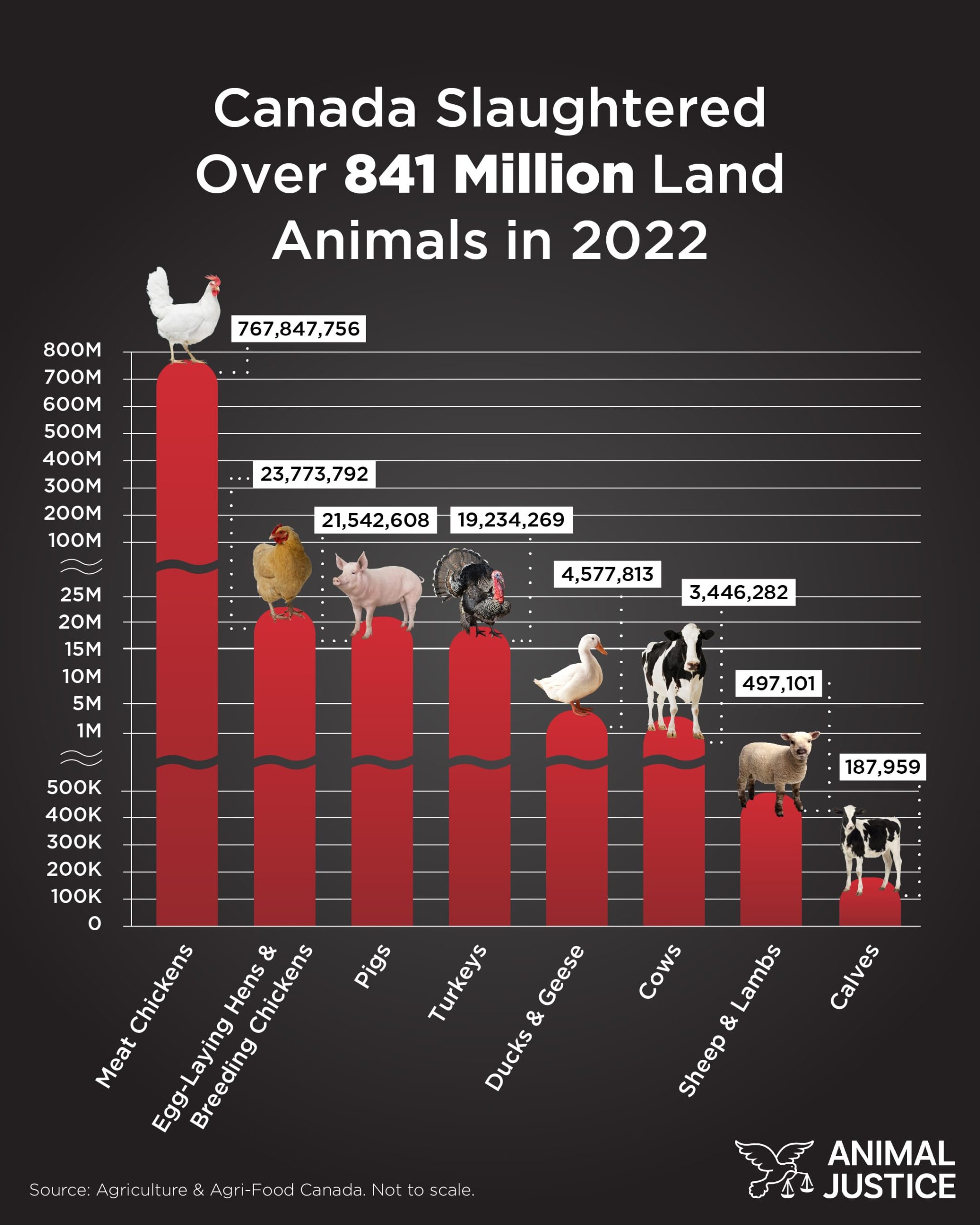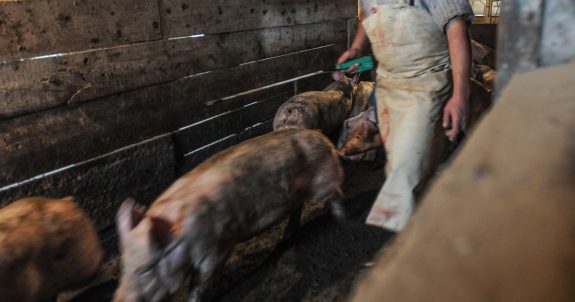In 2022, 841 million land animals were killed for food in Canada, making it the highest year on record since Animal Justice began analyzing government slaughter statistics.

Up from 825 million in 2021, 812 million in 2020, 834 million in 2019, 819 million in 2018, 800 million in 2017, 771 million in 2016, and 750 million in 2015.
The number of animals slaughtered for food in 2020 and 2021 dipped due to disruptions caused by the pandemic. Sadly, the death toll has now bounced back up again, and Canada continues on its path of drastic growth in the number of animals killed.
Most of the increased slaughter is due to human population growth, and increased demand for chicken meat. Over 17 million more chickens were killed in 2022 versus 2021. Chickens endure some of the worst suffering in the agriculture industry, with the vast majority trapped in cramped warehouses by the thousands, usually in cages if they’re used for eggs. In recent years, there has been a trend towards eating more chicken meat over meat from other animals. But a chicken is much smaller than a pig or cow, and this dietary switch can cause many more individuals to suffer and die. Here are the numbers broken down by sector:
- Meat chickens: 767,847,756
- Egg-laying hens & breeding chickens: 23,773,792
- Pigs: 21,542,608
- Turkeys: 19,234,269
- Ducks & geese: 4,577,813
- Adult cows (dairy & meat): 3,446,282
- Sheeps & lambs: 497,101
- Calves: 187,959
TOTAL: 841,107,580

These numbers don’t tell the full story. They only account for land animals who were slaughtered and entered the food supply. Animals who die on farms or during transport are not included, including male chicks ground up alive as “waste” at hatcheries. We do know that at least 12,800,000 chicks were ground up alive in egg hatcheries in 2022, over five million chicks were killed in meat chicken hatcheries, and over one million turkey chicks were killed.
Aquatic animals such as fishes, lobsters, crabs, and clams also aren’t counted. Government statistics measure their lives by weight, not as individuals. We know that billions of them are killed each year.
The government also currently refuses to admit how many horses are slaughtered in Canada for meat. The last year this data was available was 2016, which saw 54,000 horses slaughtered, and some independent analyses list Canada as the sixth largest exporter of horse meat in the world.
The government hasn’t yet released slaughter numbers for deer, elk, wild boar, rabbits, and bison, but this page will be updated with those figures when available.
All told, the number of animals who suffer for food in Canada is on a scale that is difficult to imagine. These hundreds of millions of animals don’t have the benefit of legal regulations to improve their welfare. While voluntary, industry-written codes of practice exist, they are weak documents with no independent enforcement or public verification mechanisms. That’s why we believe that animals need lawyers, and Animal Justice’s legal team works to protect animals from cruelty and neglect. Our mission is to overhaul the legal system to better reflect our country’s values of compassion and justice for all—including animals killed for food. Please join us.



